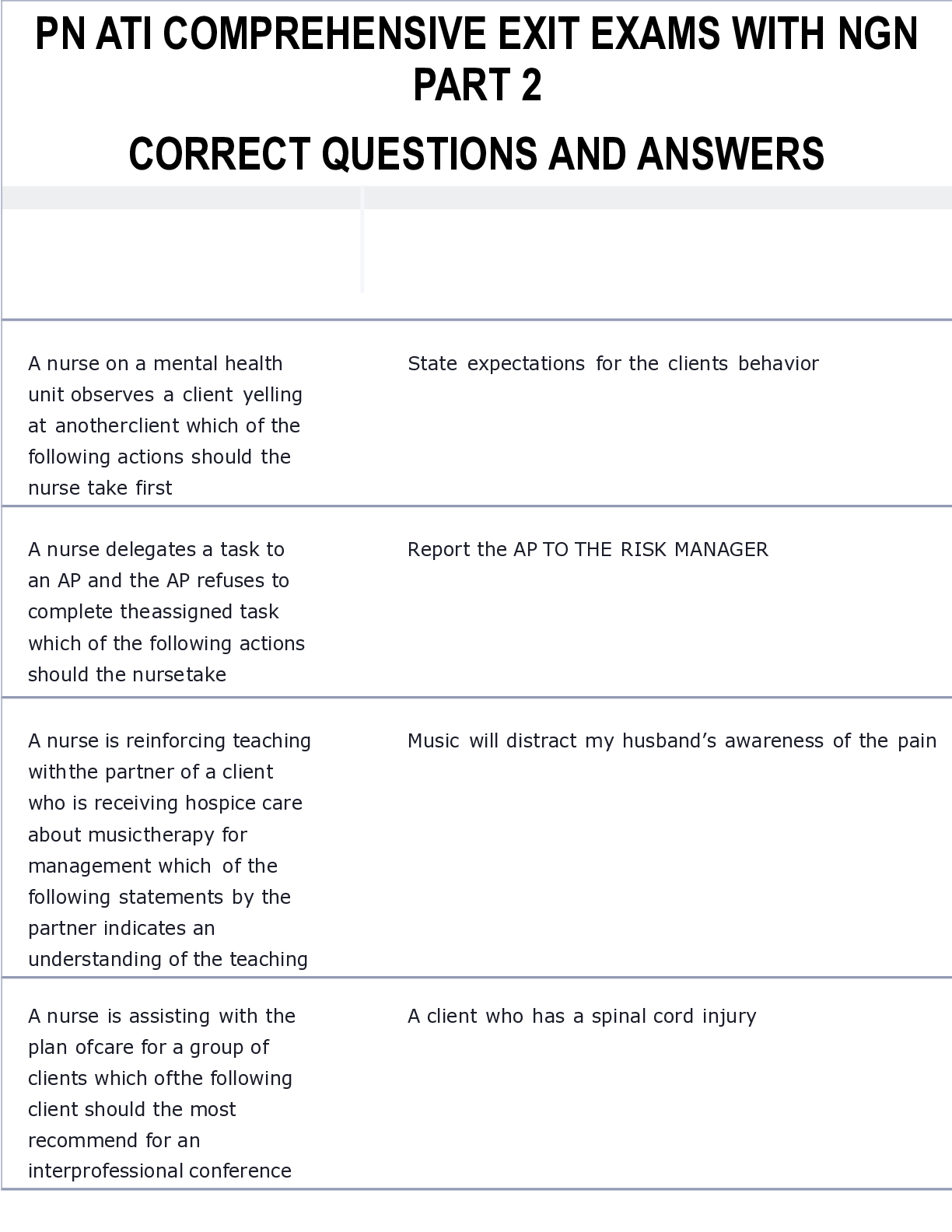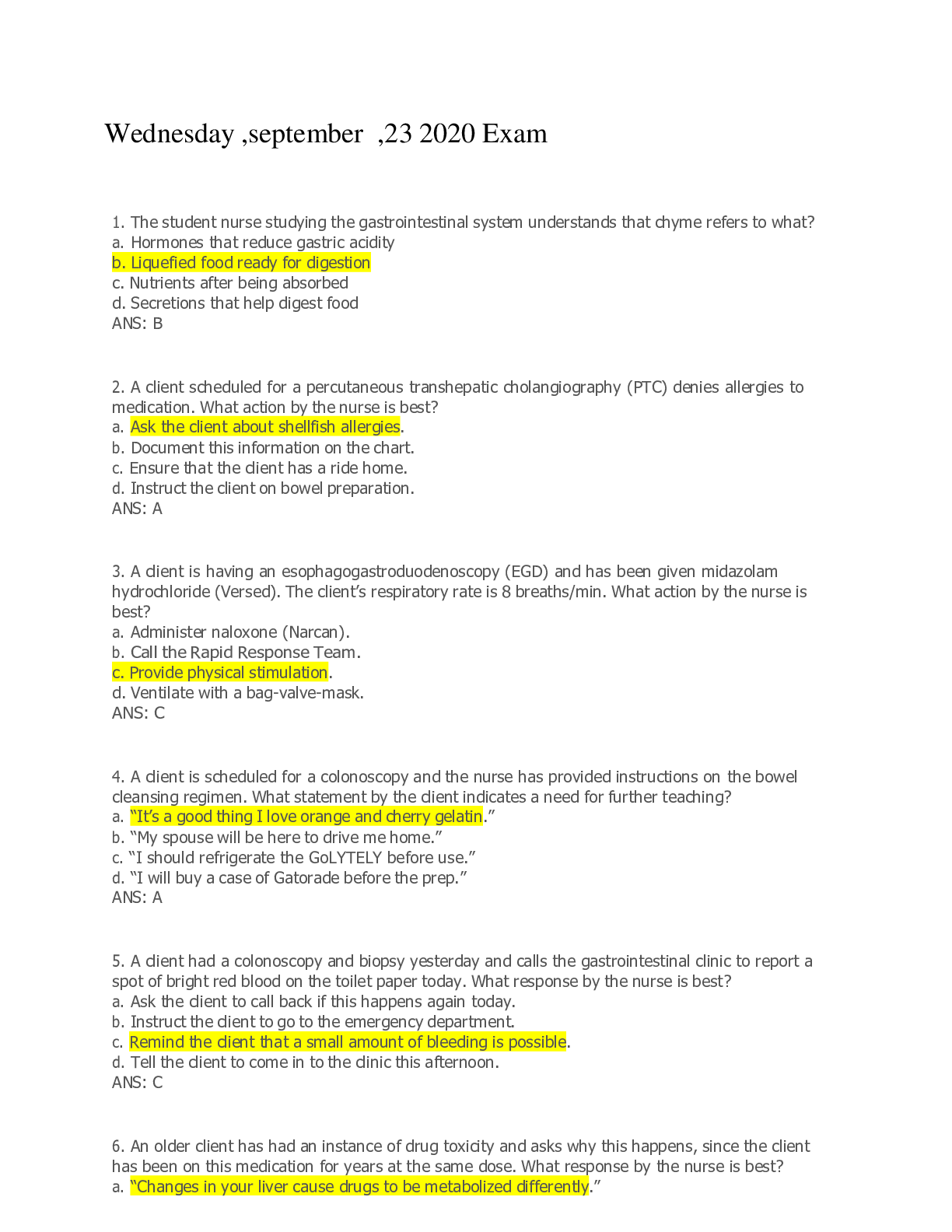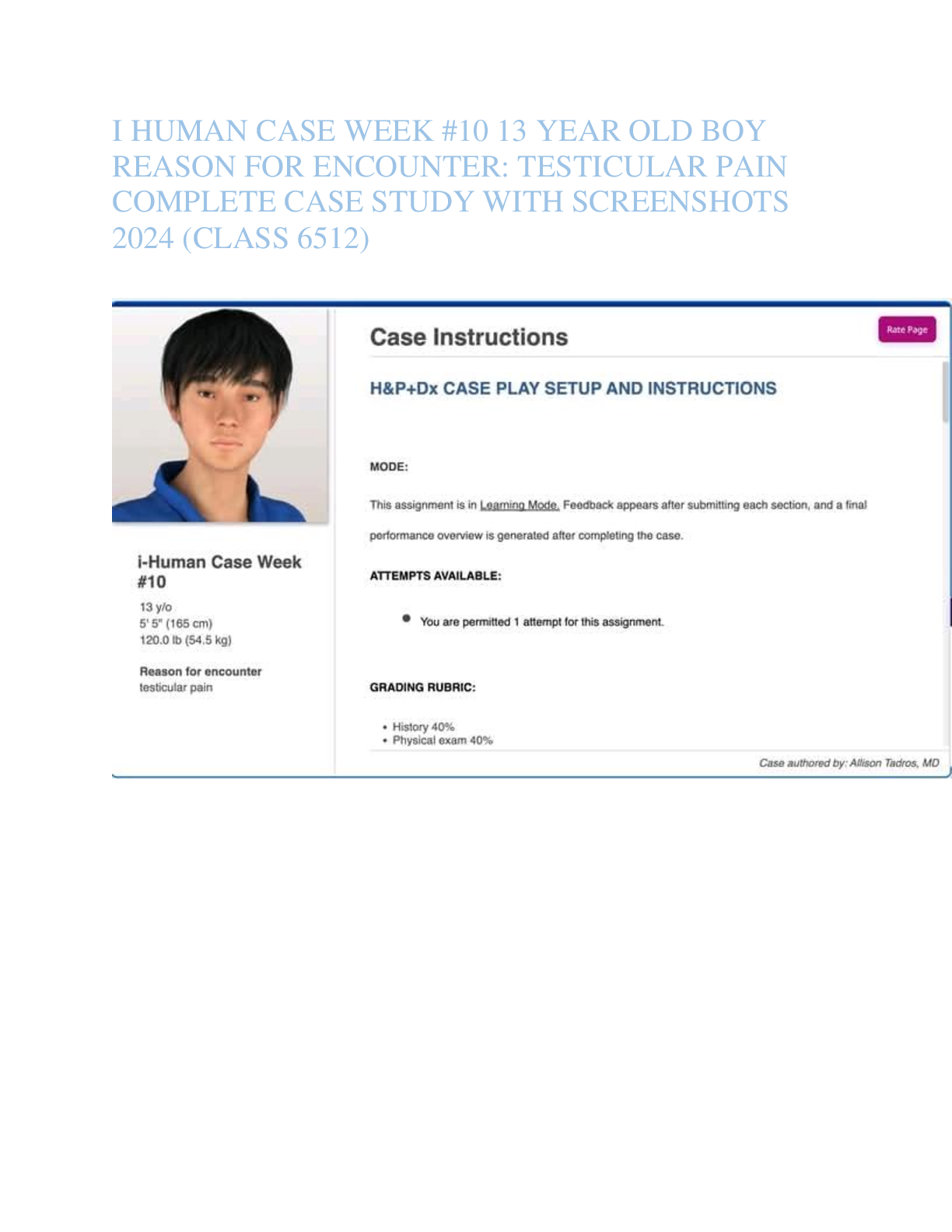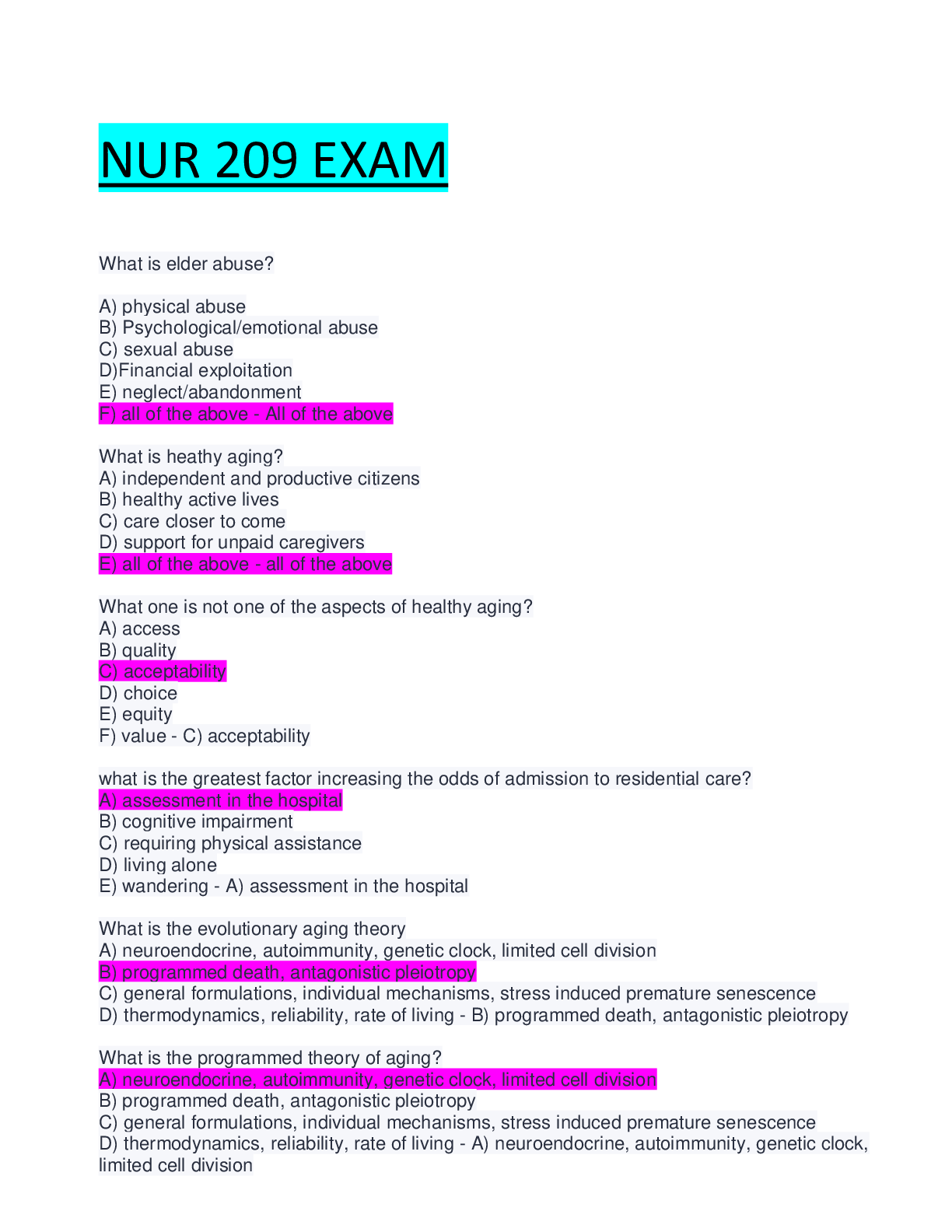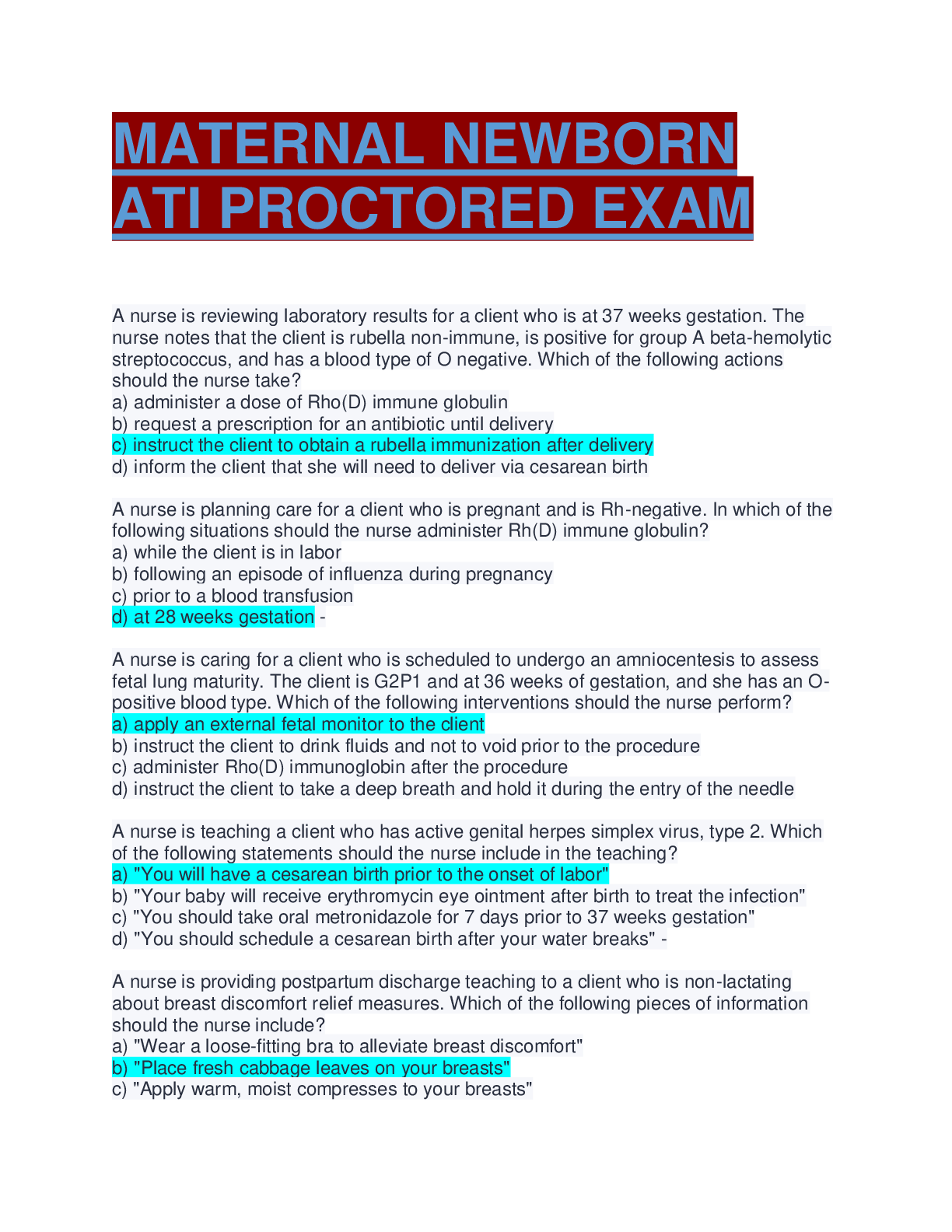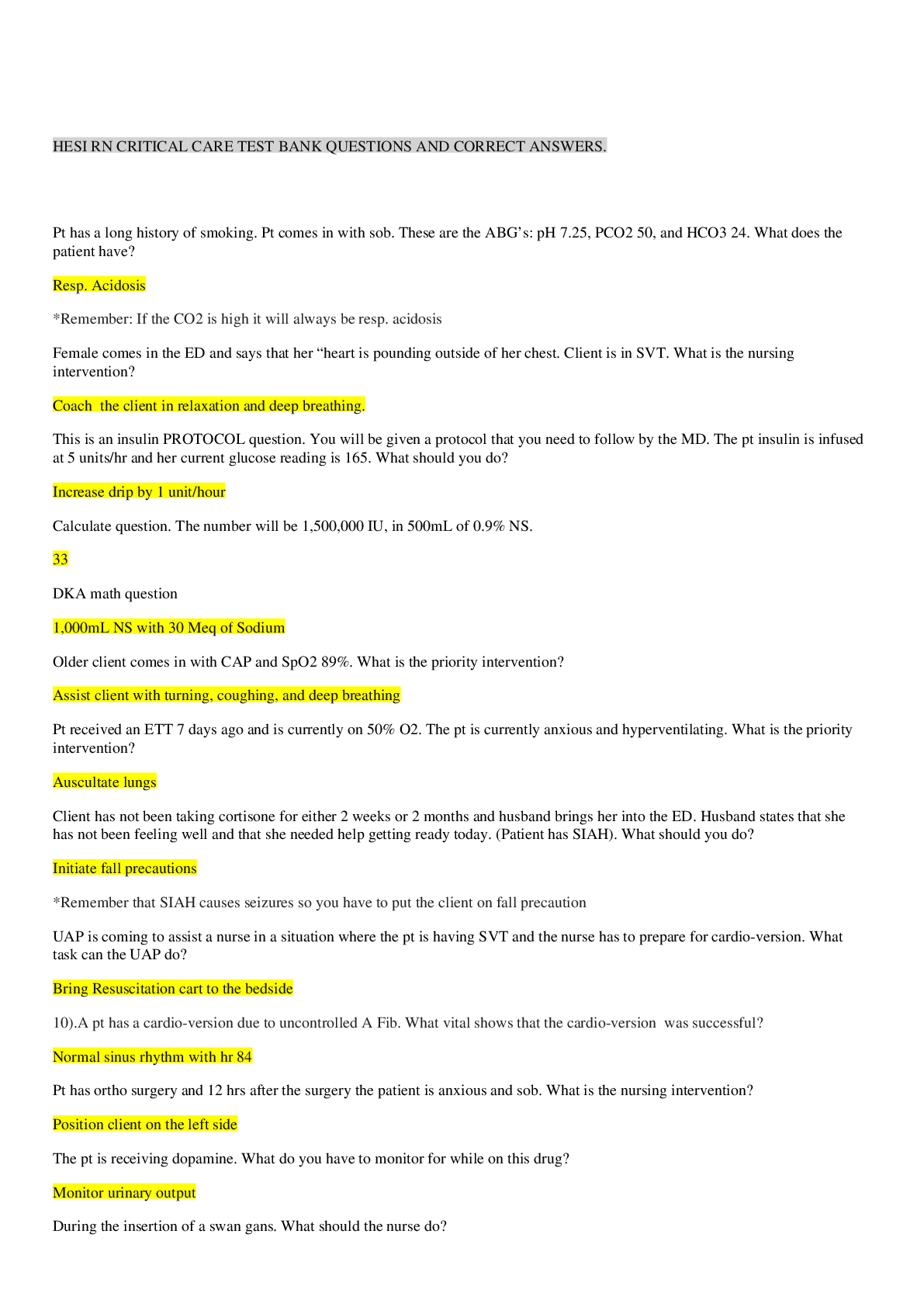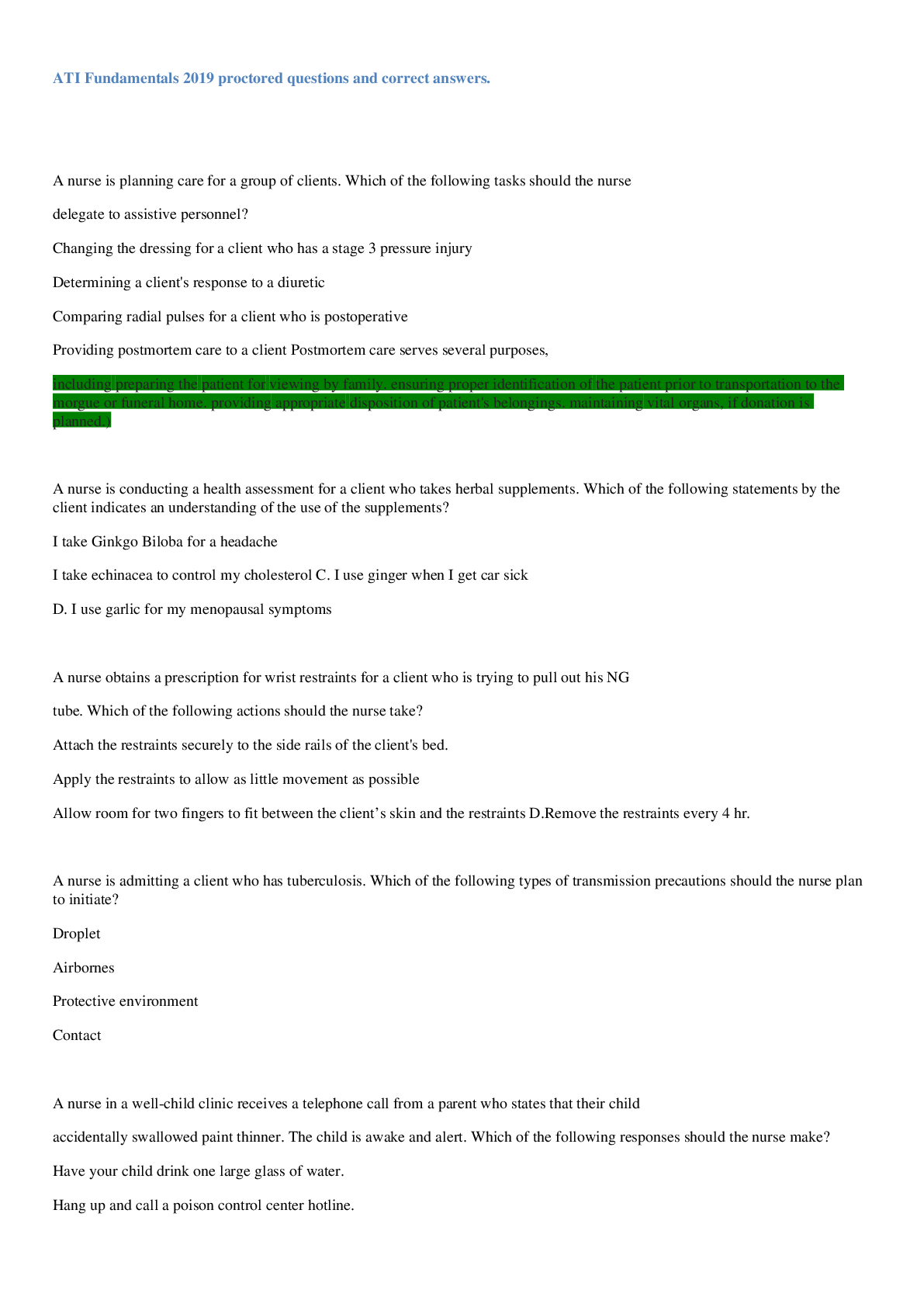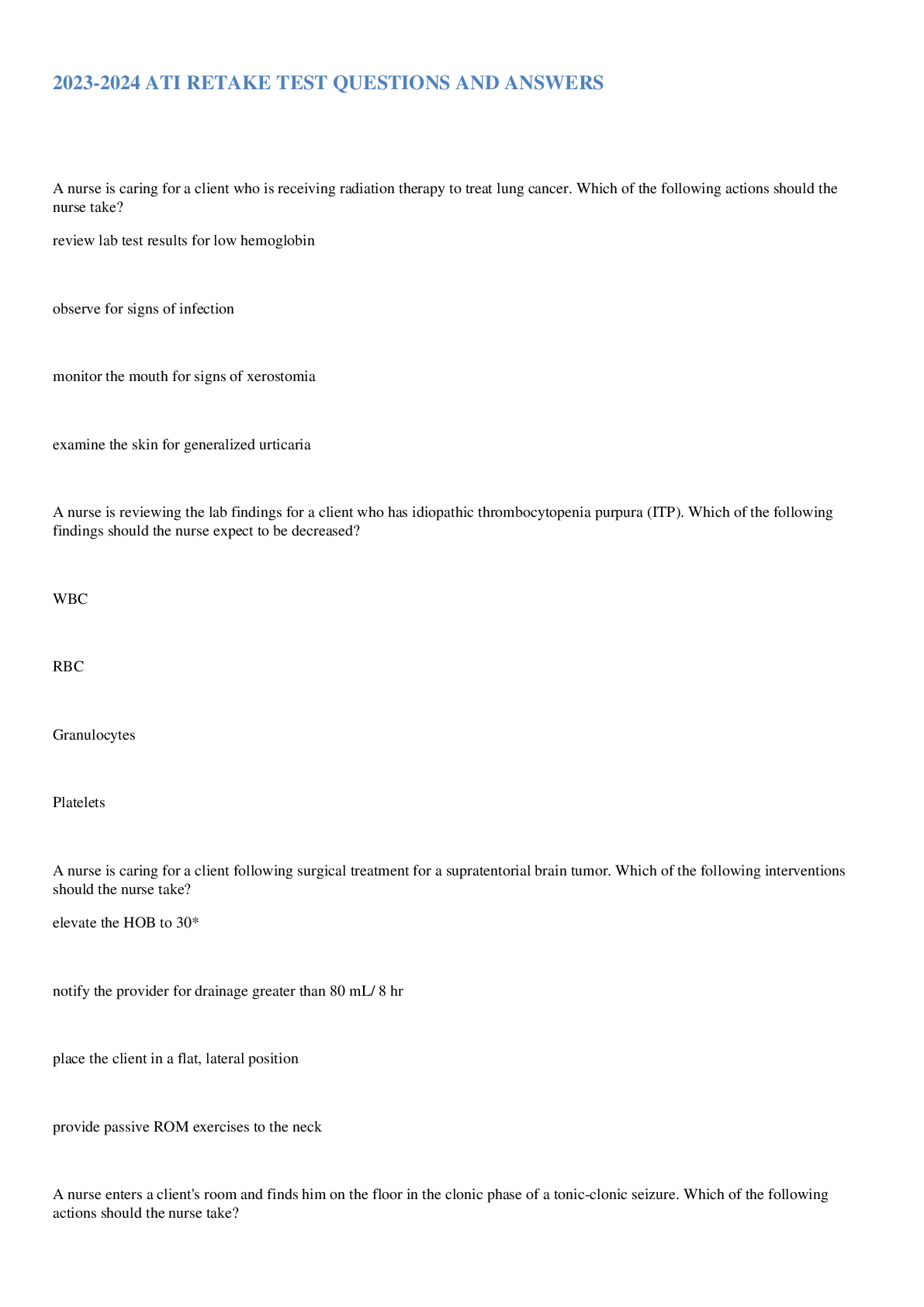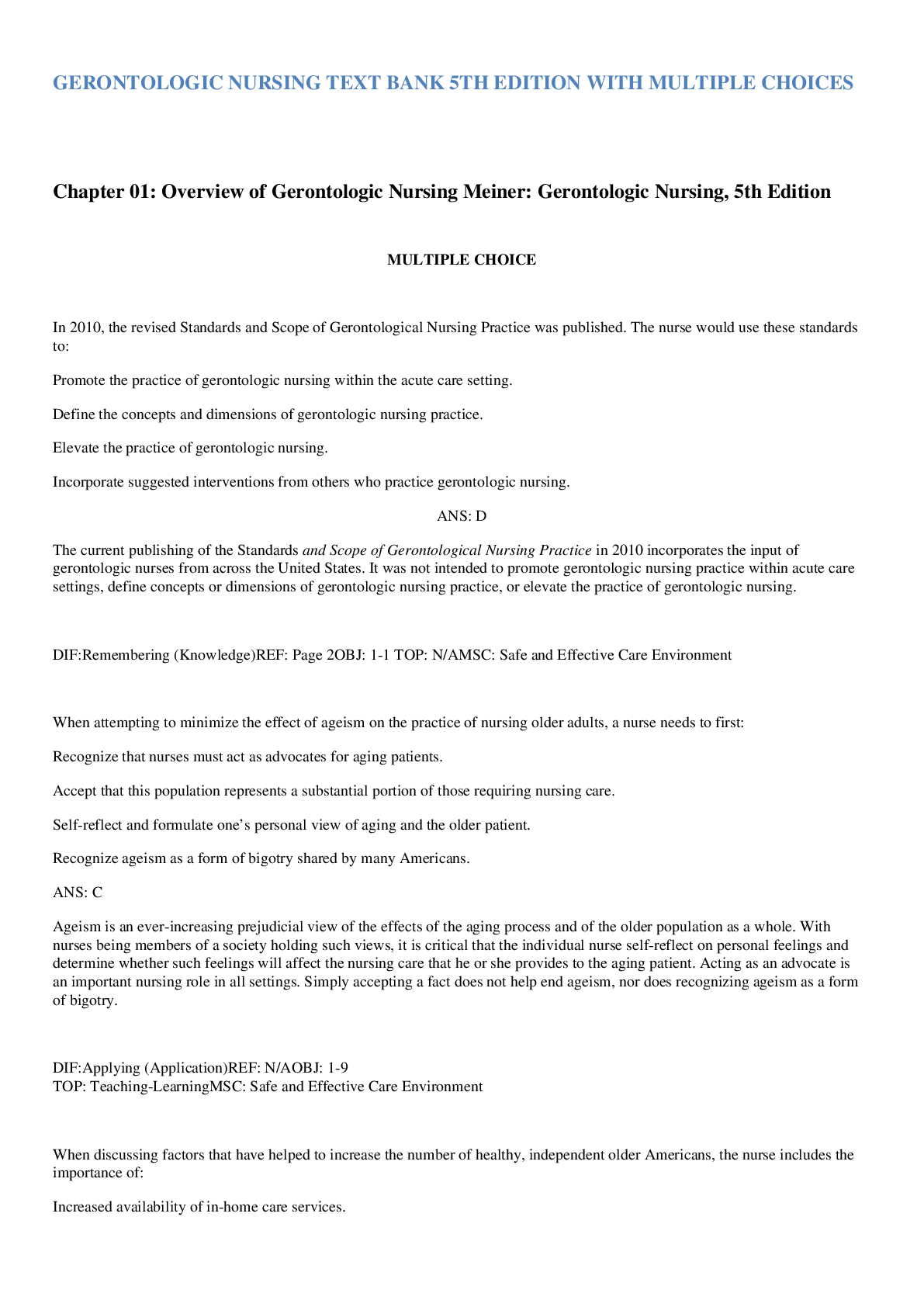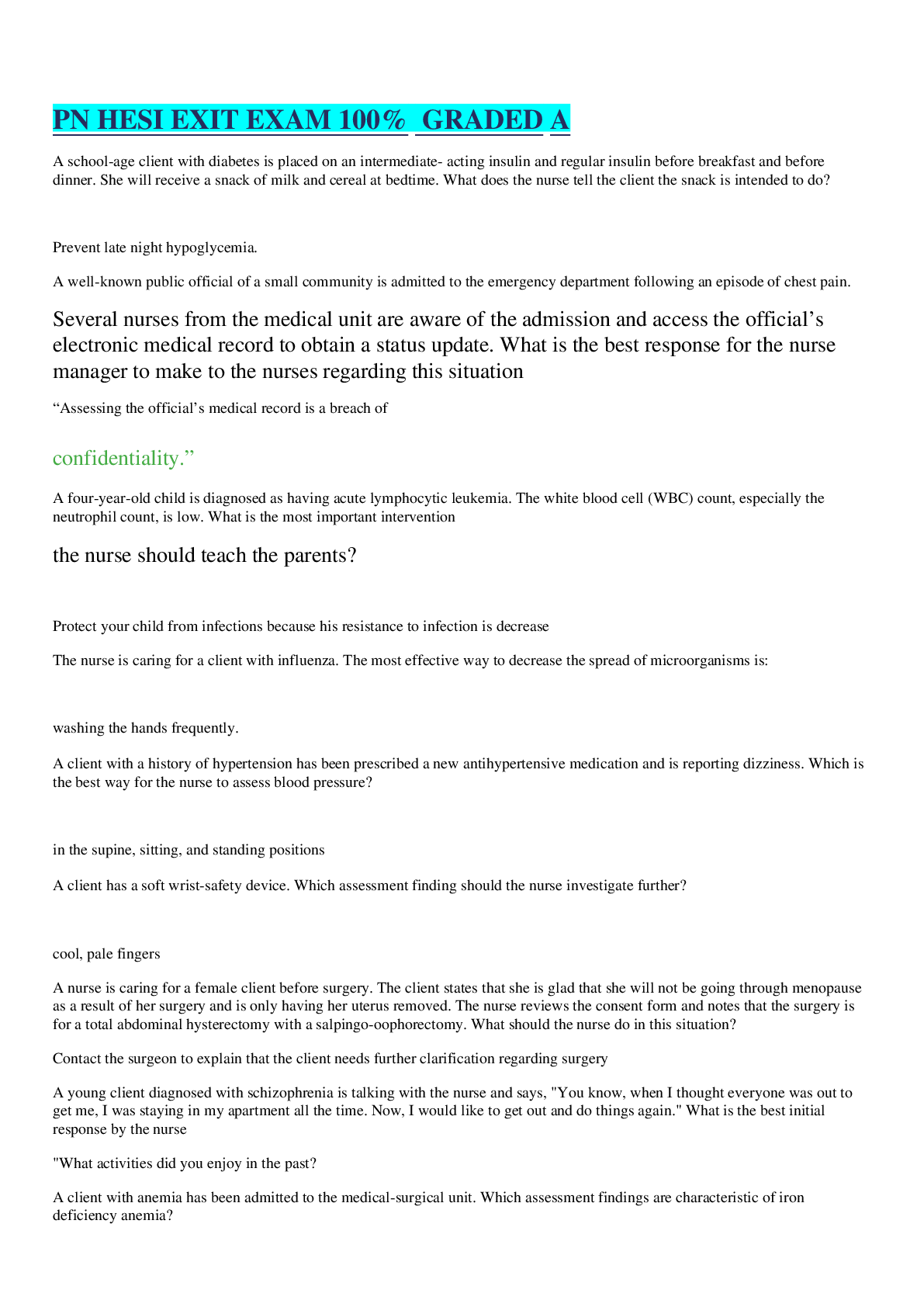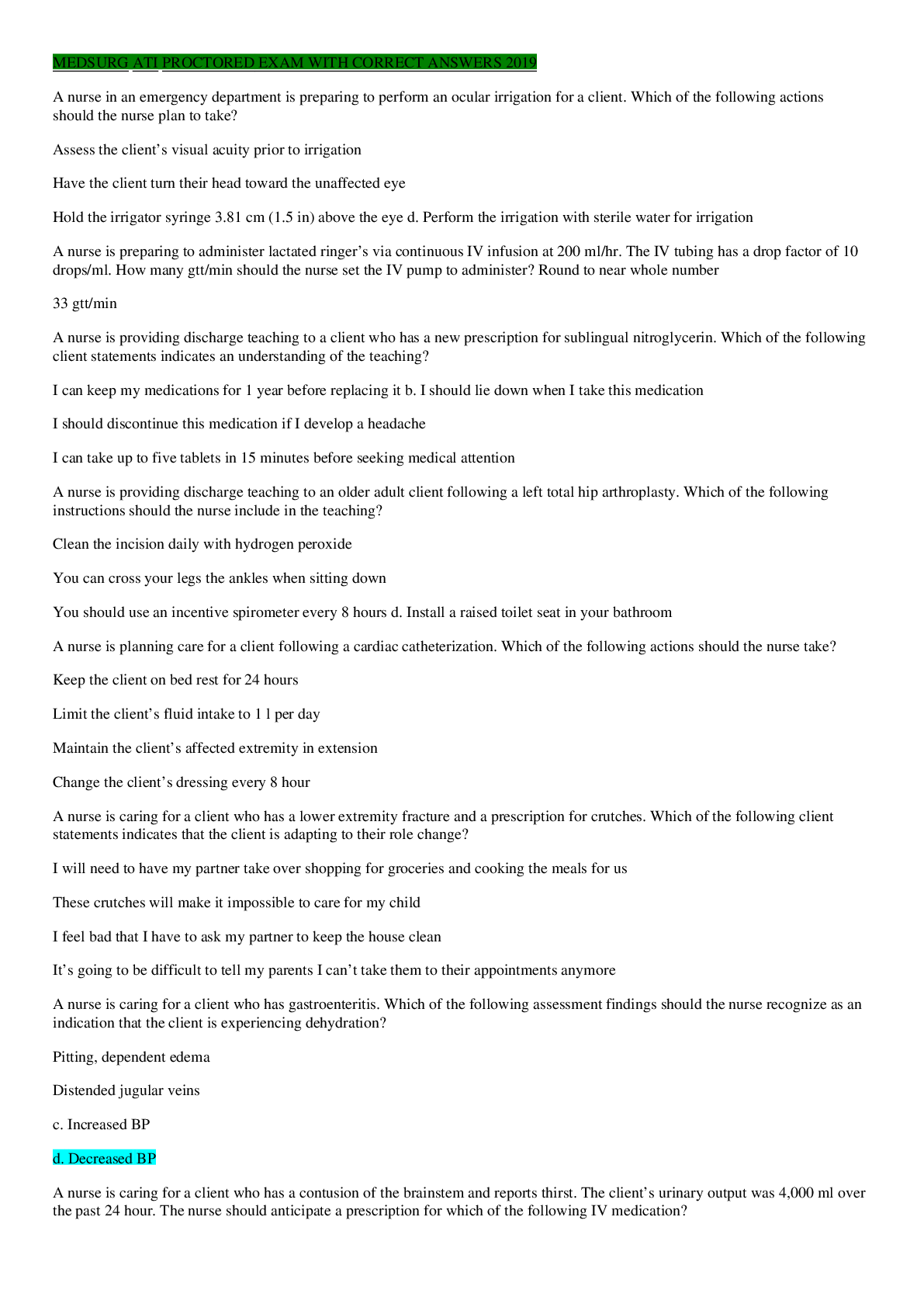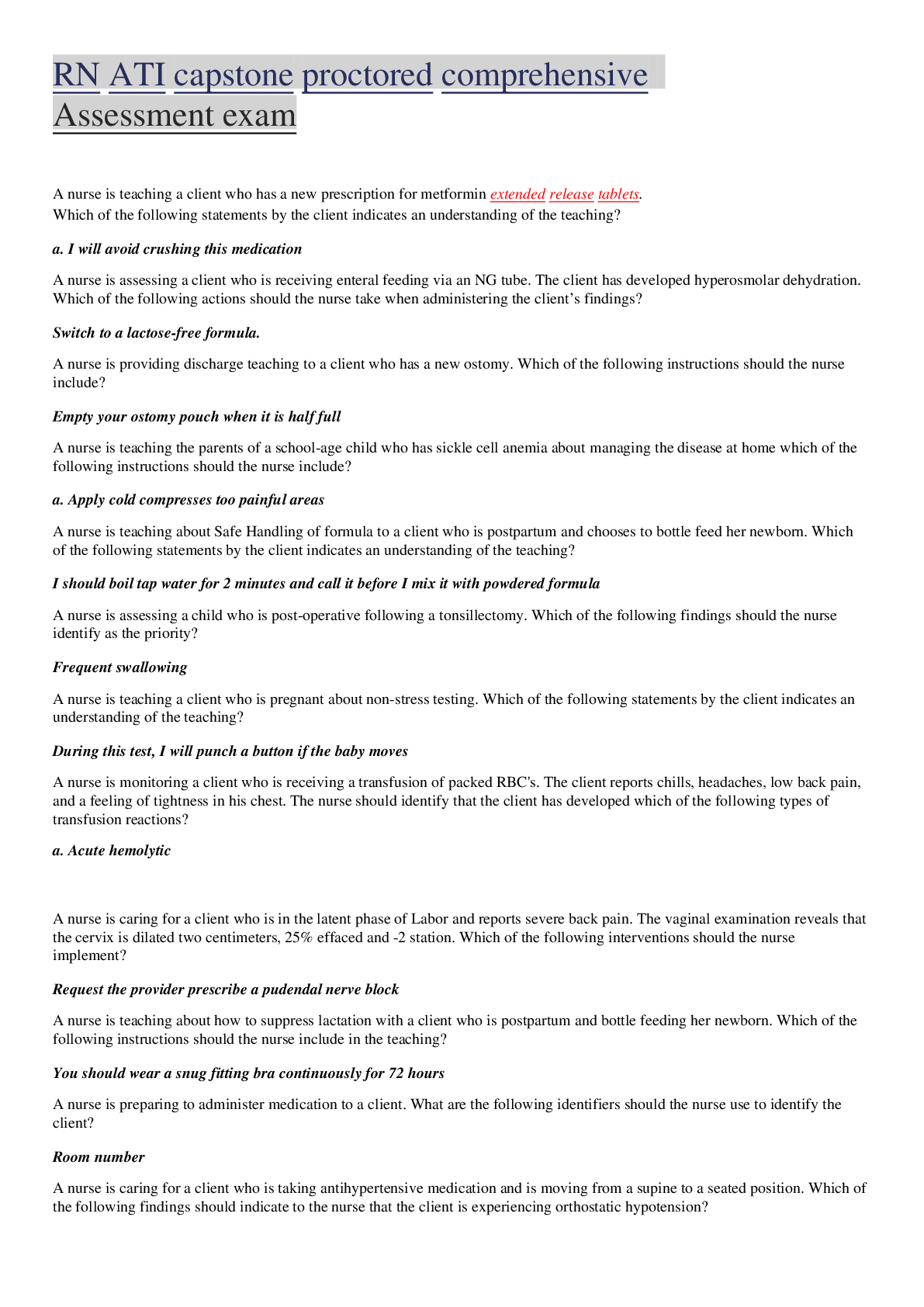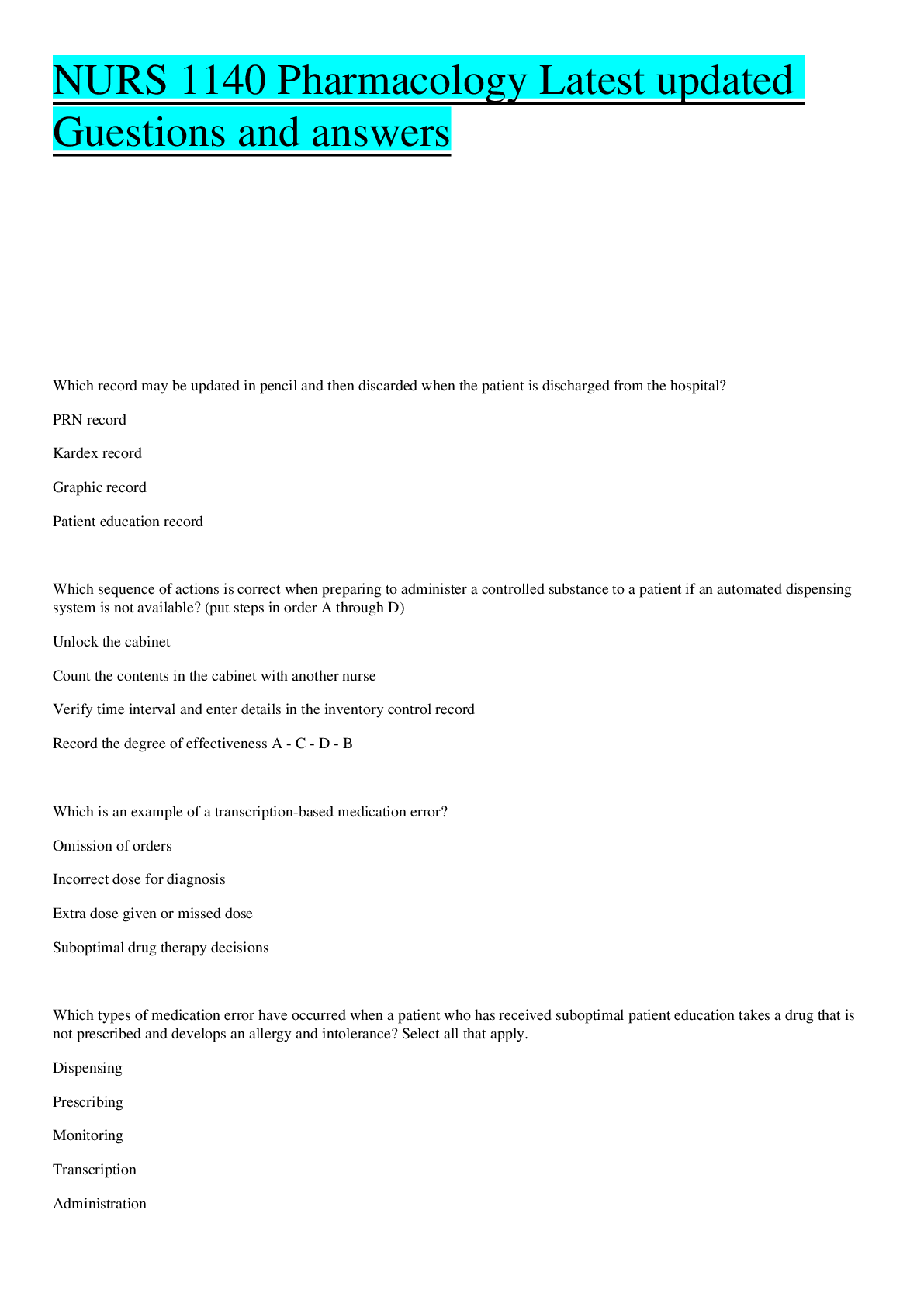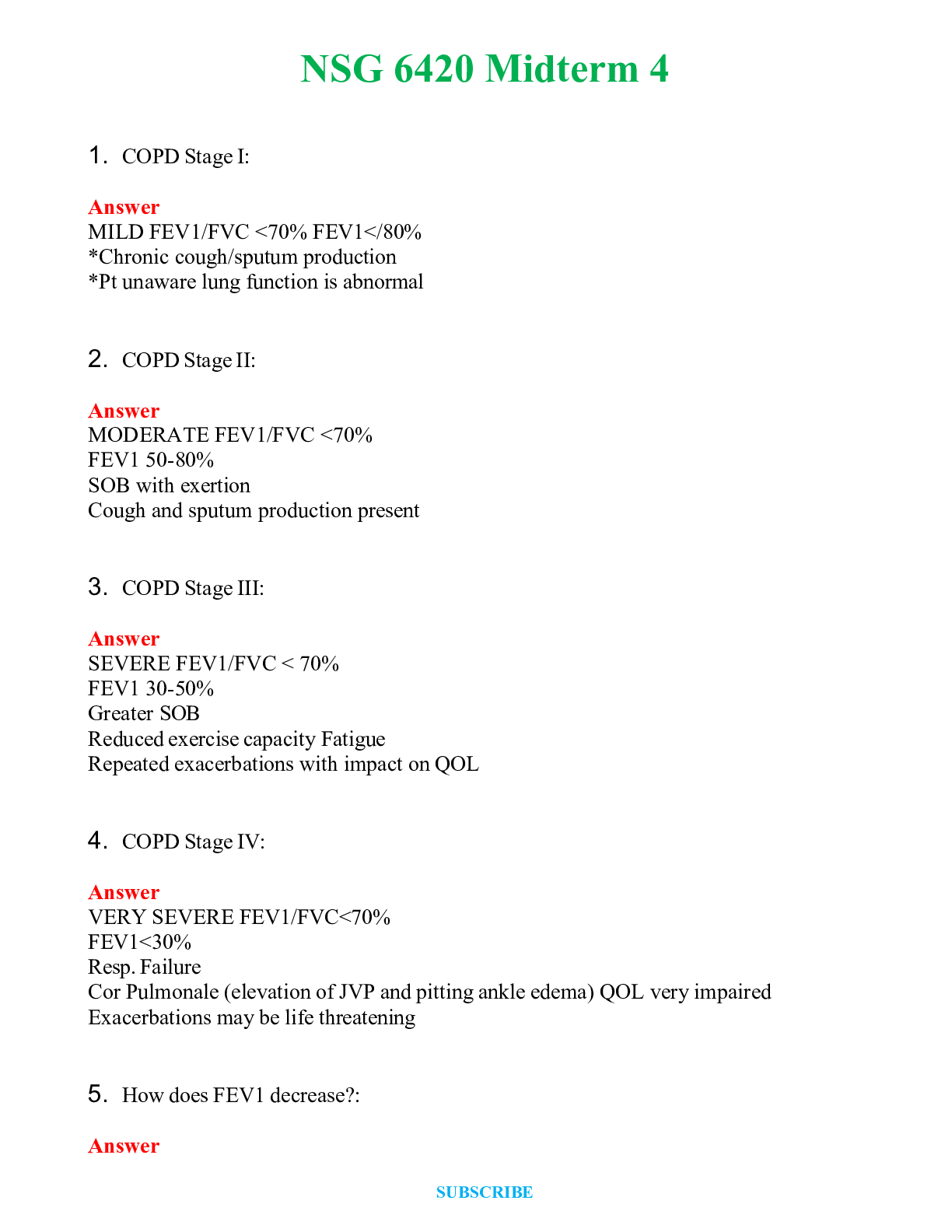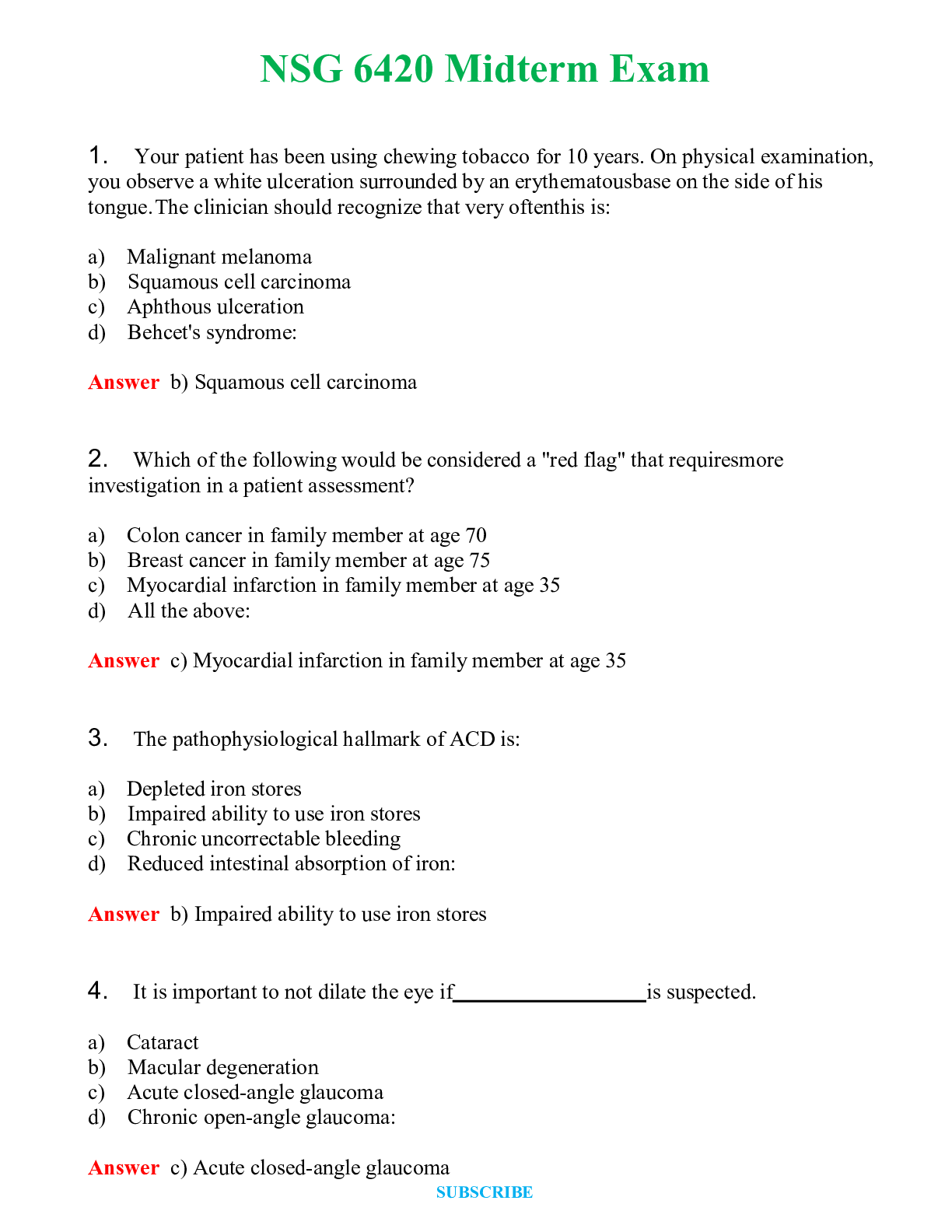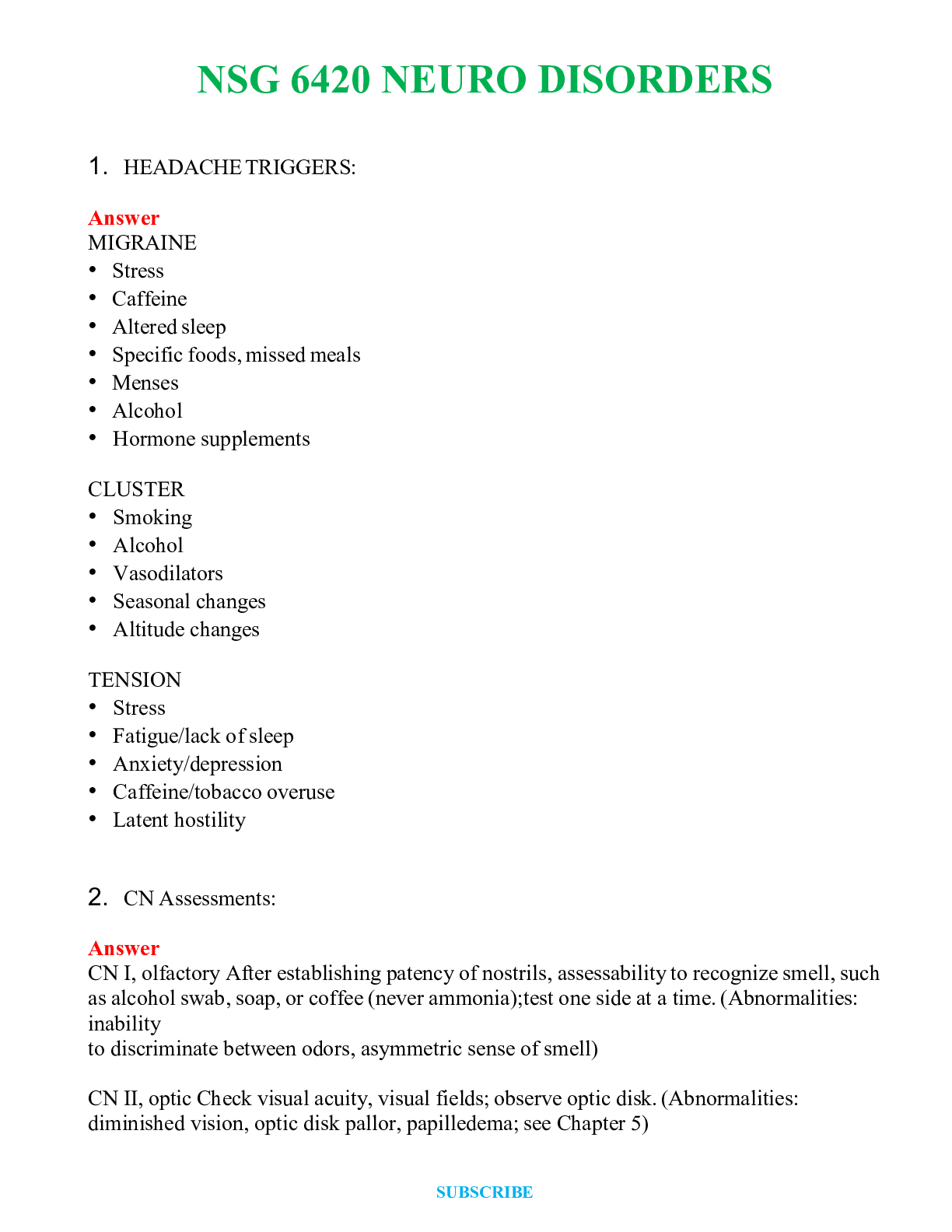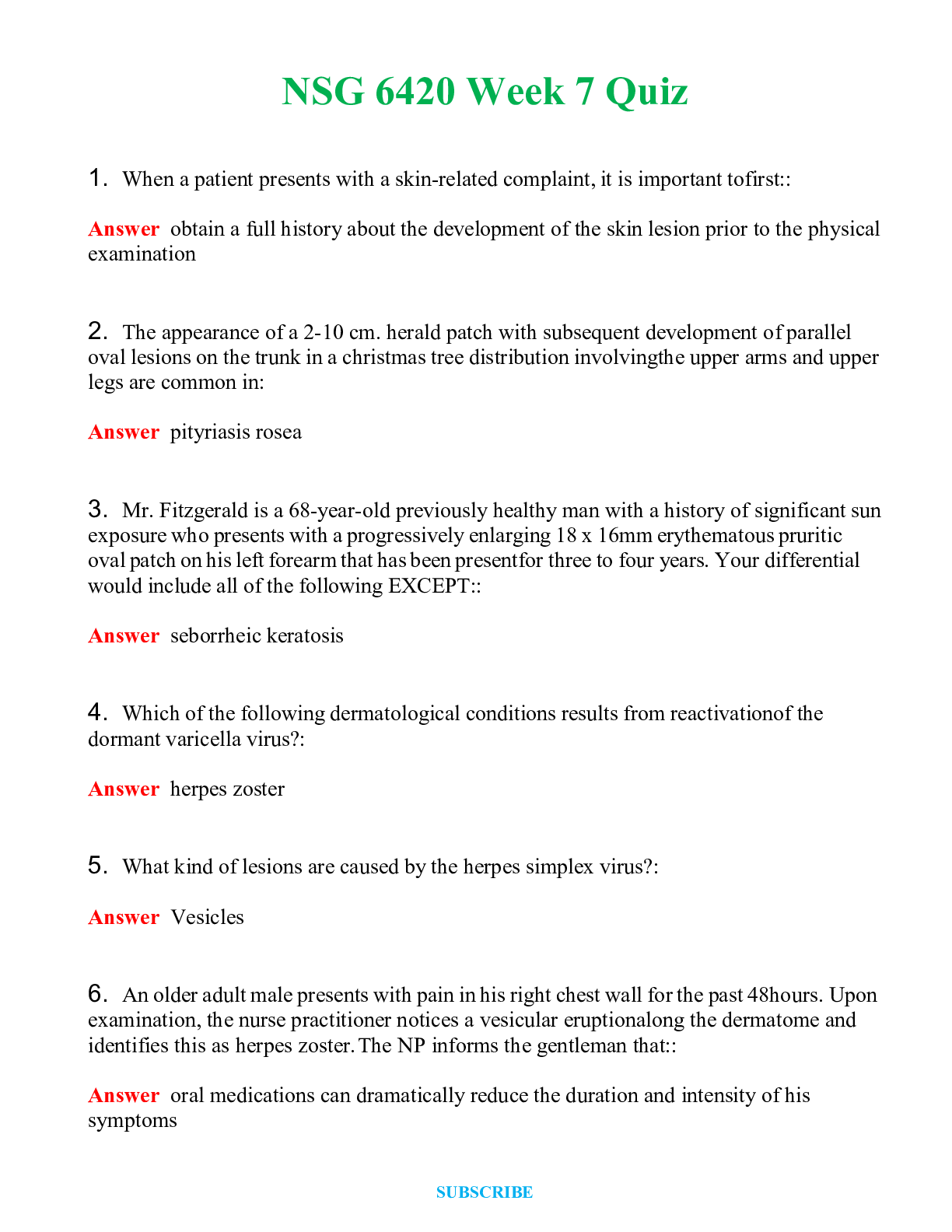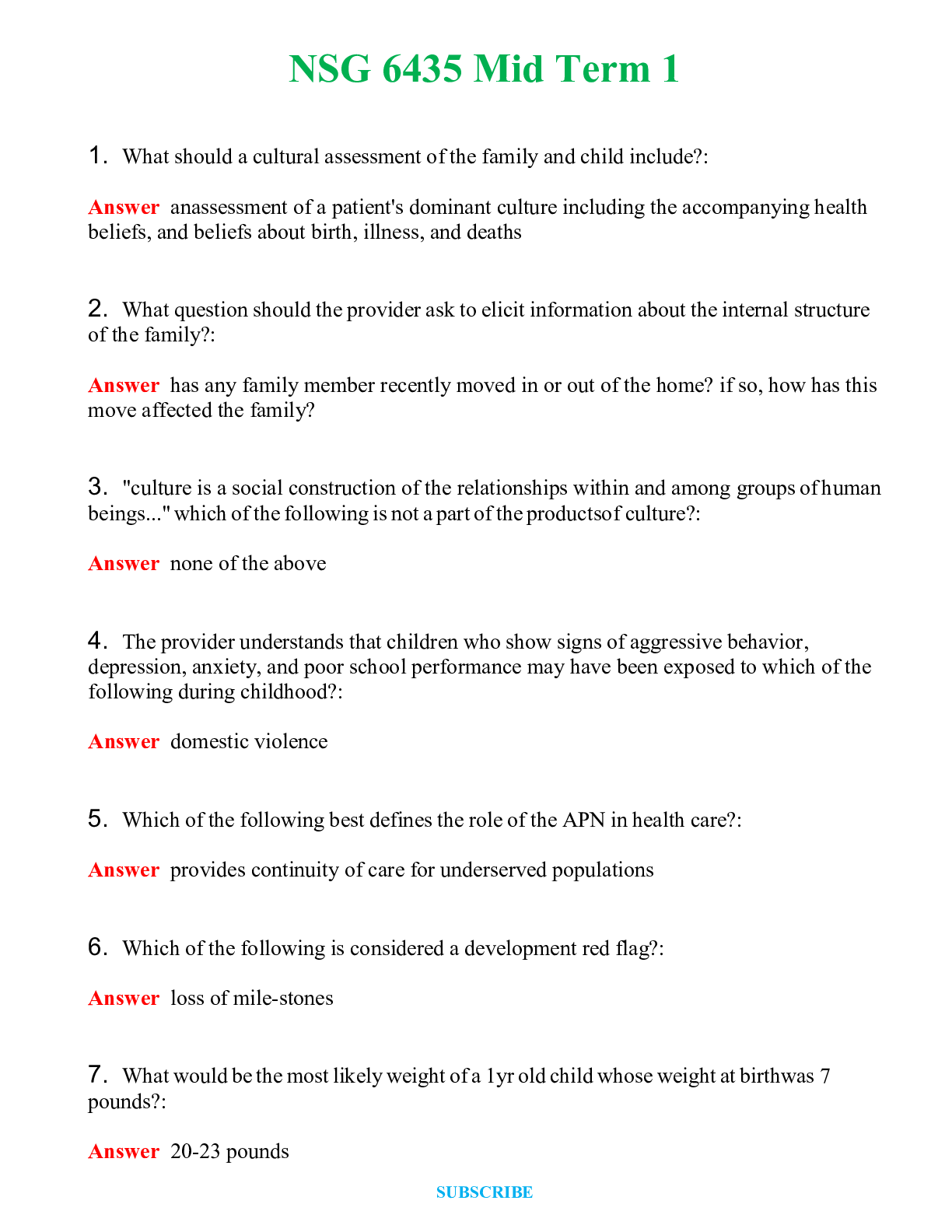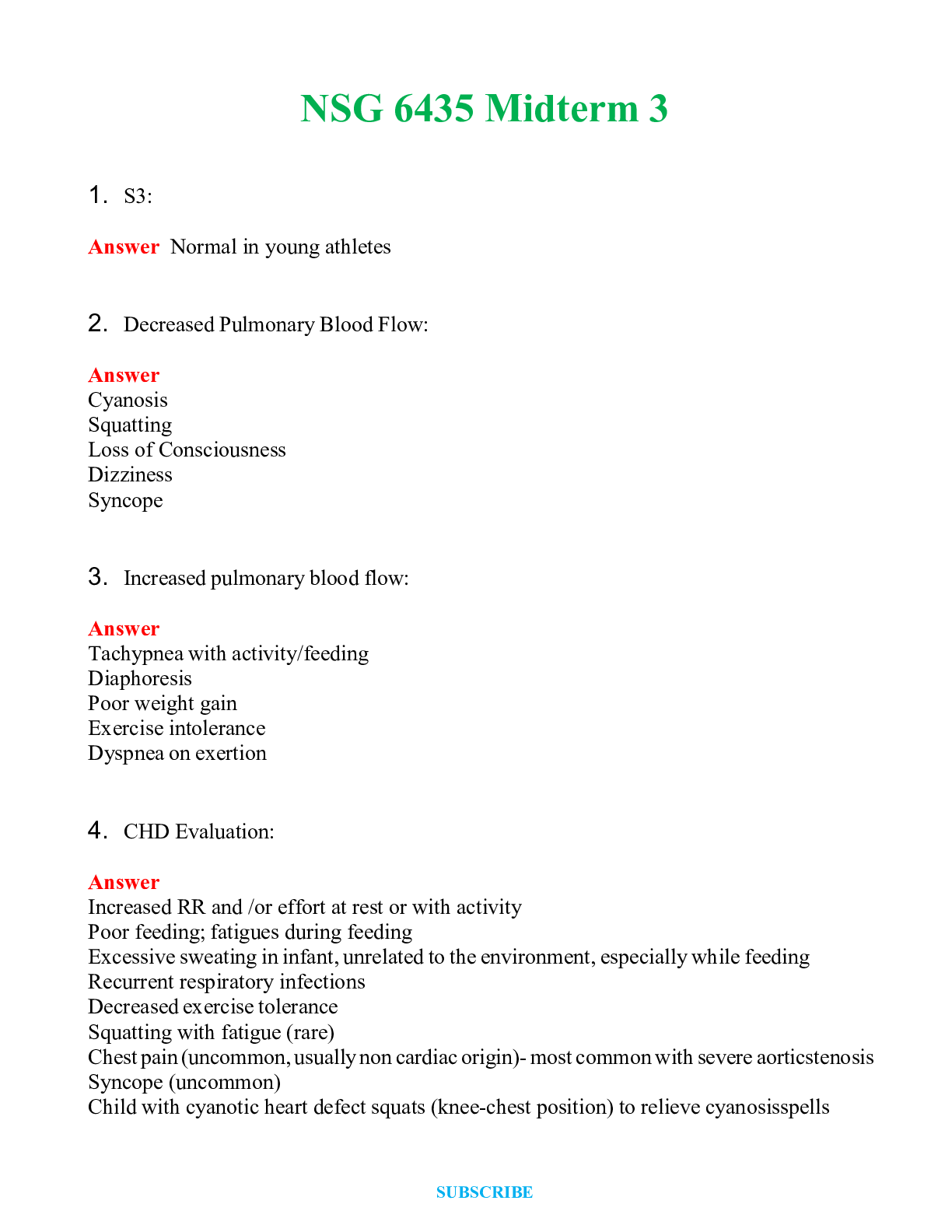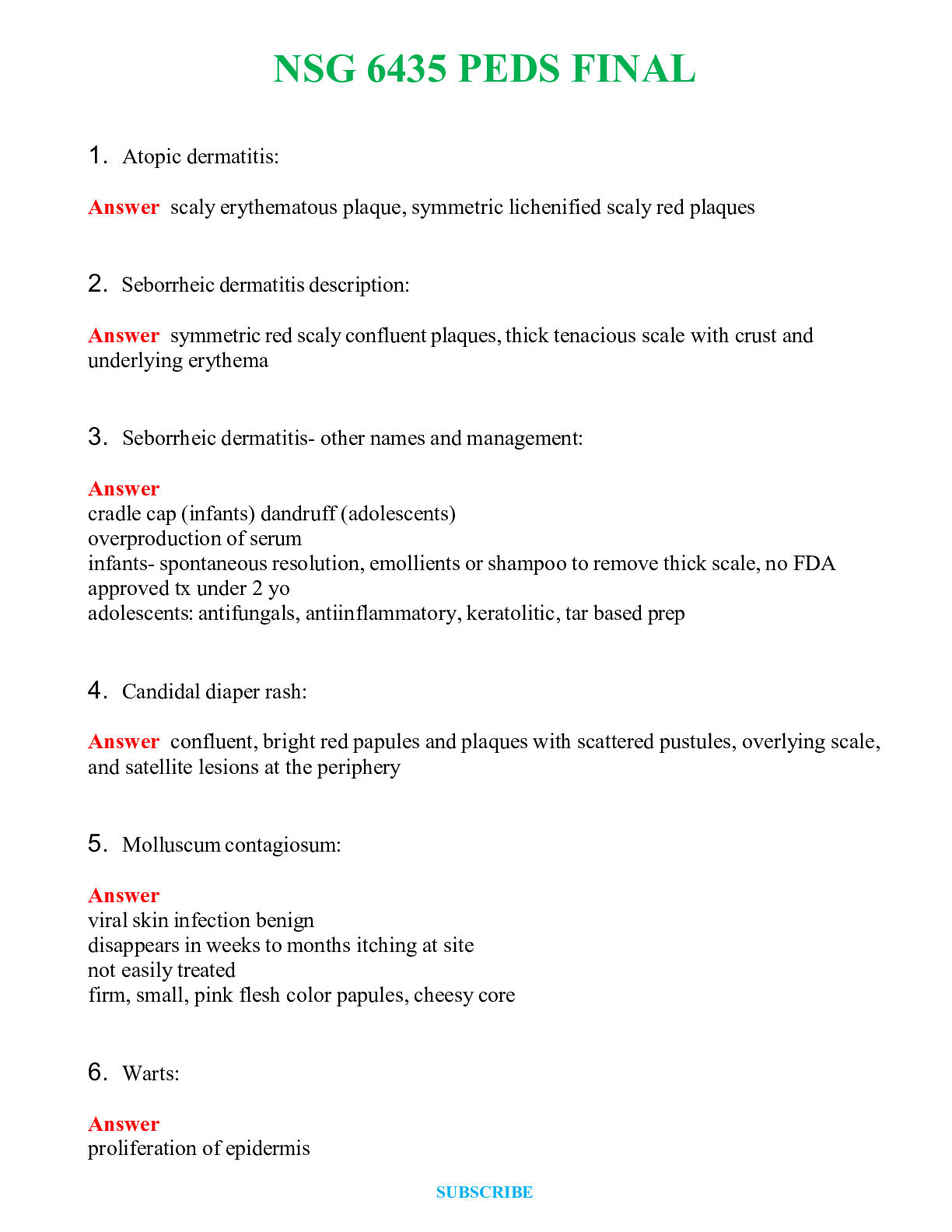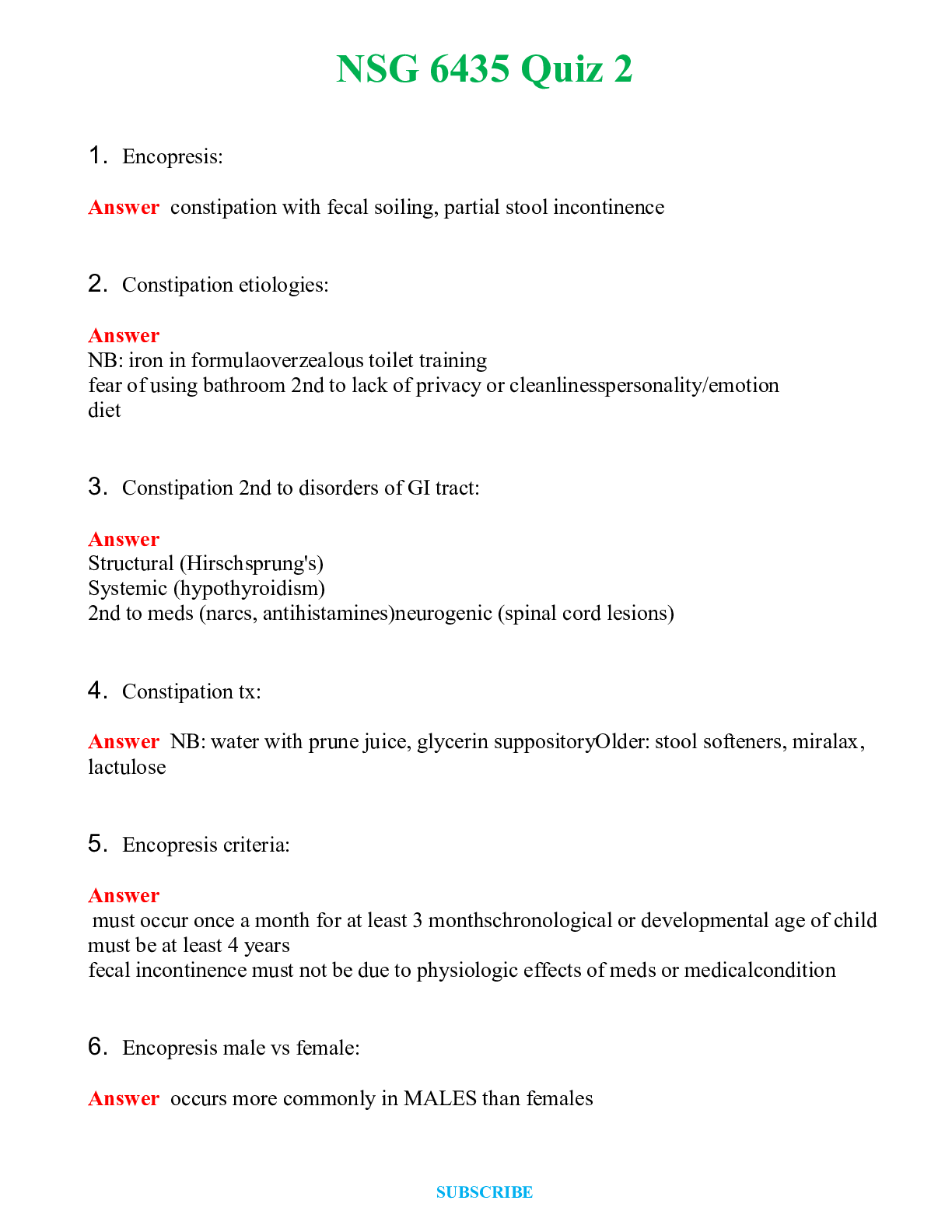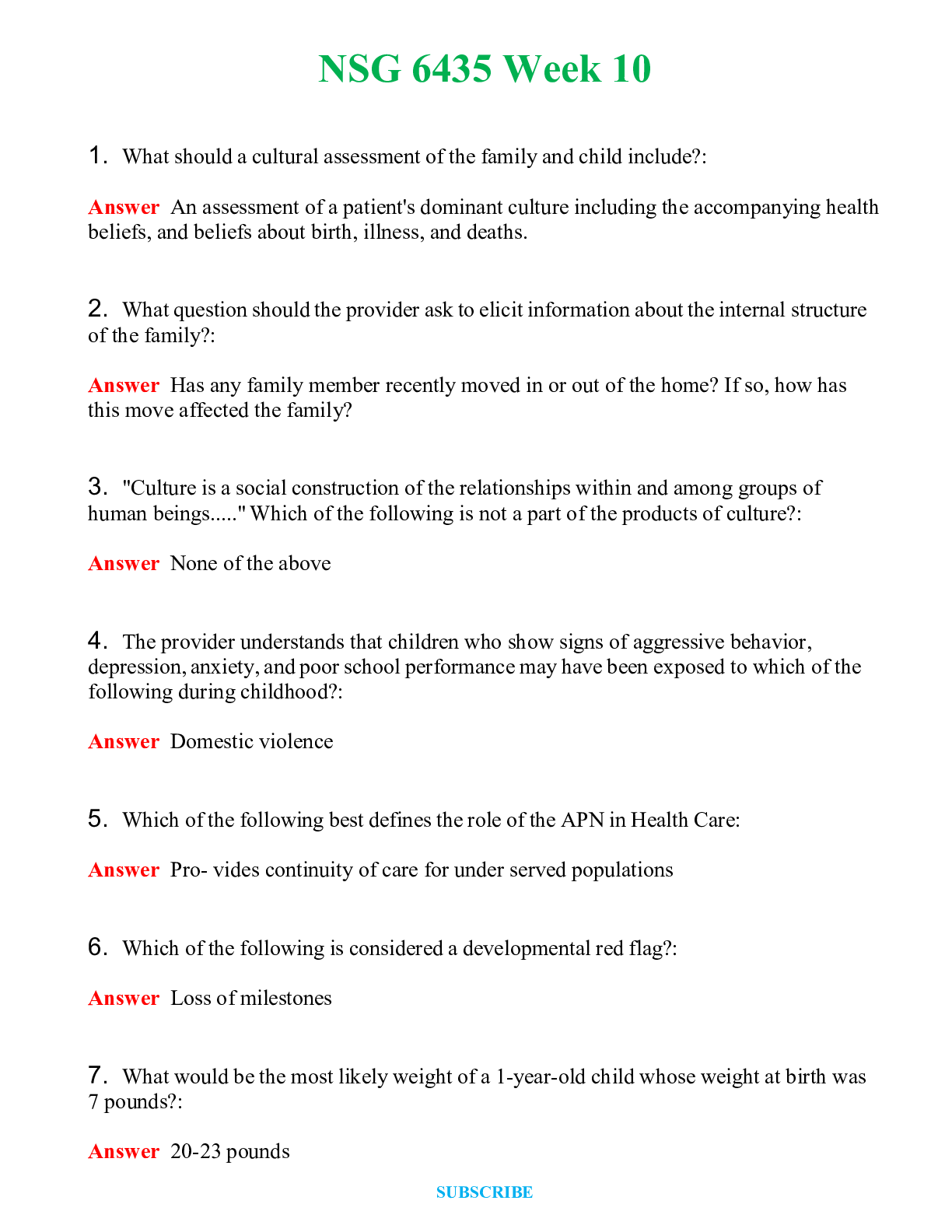NUR 209 EXAM
Document Content and Description Below
NUR 209 EXAM
What is elder abuse?
A) physical abuse
B) Psychological/emotional abuse
C) sexual abuse
D)Financial exploitation
E) neglect/abandonment
F) all of the above - All of the abov
...
e
What is heathy aging?
A) independent and productive citizens
B) healthy active lives
C) care closer to come
D) support for unpaid caregivers
E) all of the above - all of the above
What one is not one of the aspects of healthy aging?
A) access
B) quality
C) acceptability
D) choice
E) equity
F) value - C) acceptability
what is the greatest factor increasing the odds of admission to residential care?
A) assessment in the hospital
B) cognitive impairment
C) requiring physical assistance
D) living alone
E) wandering - A) assessment in the hospital
What is the evolutionary aging theory
A) neuroendocrine, autoimmunity, genetic clock, limited cell division
B) programmed death, antagonistic pleiotropy
C) general formulations, individual mechanisms, stress induced premature senescence
D) thermodynamics, reliability, rate of living - B) programmed death, antagonistic pleiotropy
What is the programmed theory of aging?
A) neuroendocrine, autoimmunity, genetic clock, limited cell division
B) programmed death, antagonistic pleiotropy
C) general formulations, individual mechanisms, stress induced premature senescence
D) thermodynamics, reliability, rate of living - A) neuroendocrine, autoimmunity, genetic clock, limited cell division
What are the damage theories
A) neuroendocrine, autoimmunity, genetic clock, limited cell division
B) programmed death, antagonistic pleiotropy
C) general formulations, individual mechanisms, stress induced premature senescence
D) thermodynamics, reliability, rate of living - C) general formulations, individual mechanisms, stress induced premature senescence
What is the molecular biology theory of aging?
A) neuroendocrine, autoimmunity, genetic clock, limited cell division
B) programmed death, antagonistic pleiotropy
C) general formulations, individual mechanisms, stress induced premature senescence
D) thermodynamics, reliability, rate of living - D) thermodynamics, reliability, rate of living
Frailty - what is it
A) A state of increased vulnerability to poor resolution of homoeostasis after a stressor event, which increases the risk of adverse outcomes, including falls, delirium, and disability.
B) a geriatric syndrome characterized by weakness, weight loss and low activity that is associated outcome
C) both A and B
D) Neither A nor B - C) both A and B
Manifestations of frailty - age-related, biological vulnerability to stressors and decreased physiological reserves yielding a limited capacity to maintain homeostasis
contributing factors to frailty - age related, biological vulnerability, decreased physiological reserves, homeostasis
What is the phenotype model of frailty?
A) frailty is a syndrome meeting 3+ of phenotype criteria (weakness, low energy, self reported exhaustion, unintentional weight-loss)
B) accumulation of deficits over time that reduces one's capacity to resist stressors
C) certain genetics features are the cause of frailty
D) none of the above - A) frailty is a syndrome meeting 3+ of phenotype criteria
What is the cumulative deficit model of frailty?
A) frailty is a syndrome meeting 3+ of phenotype criteria (weakness, low energy, self reported exhaustion, unintentional weight-loss)
B) accumulation of deficits over time that reduces one's capacity to resist stressors
C) certain genetics features are the cause of frailty
D) none of the above - B) accumulation of deficits over time that reduces one's capacity to resist stressors
What are some sociodemographic risk factors of frailty?
A) Multimorbidity, Chronic diseases, Obesity, Malnutrition, Impaired cognition, Depressive symptoms, polypharmacy
B) Age, Female, Ethnicity, Education, Low socioeconomic position, Living alone, Loneliness
C) physical inactivity, diet, smoking, alcohol
D) Immune function, Neuroendocrine function, Micronutrient deficiencies, Sarcopenia, Energy imbalances/oxidative stress - B
[Show More]
Last updated: 1 year ago
Preview 1 out of 28 pages
